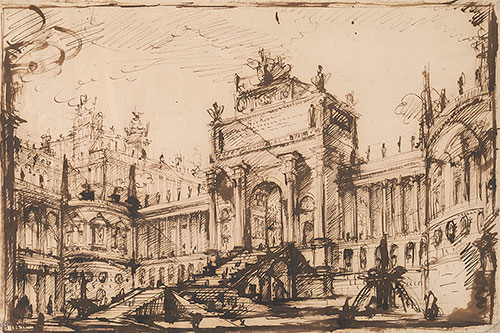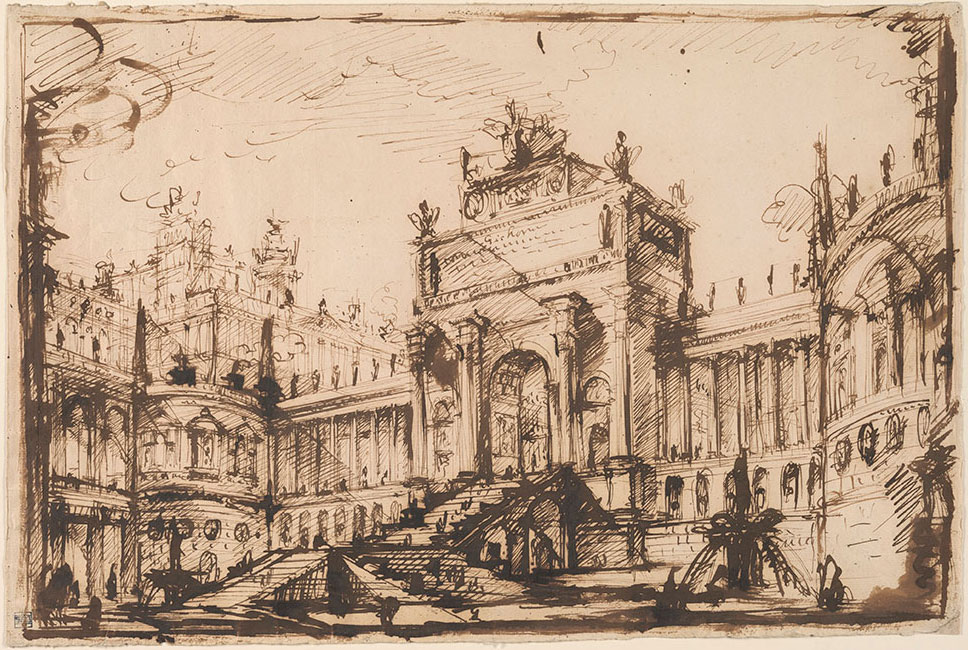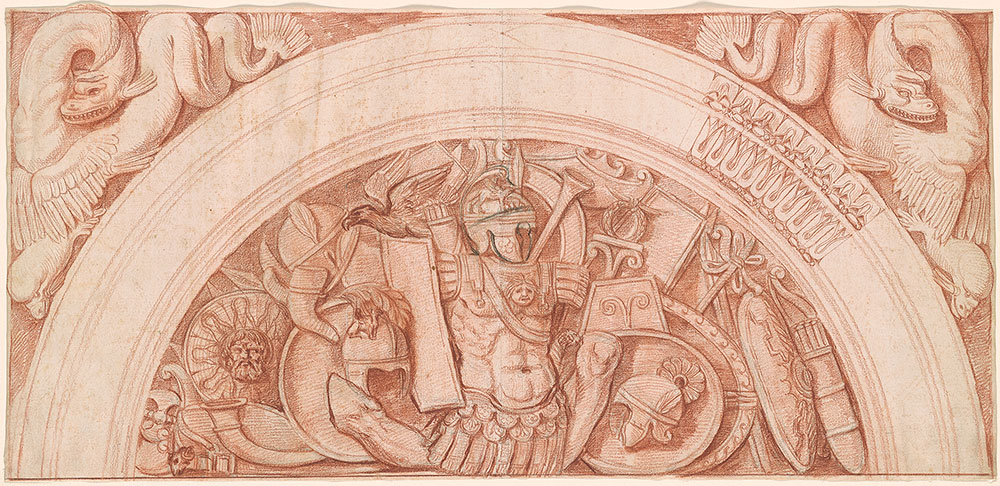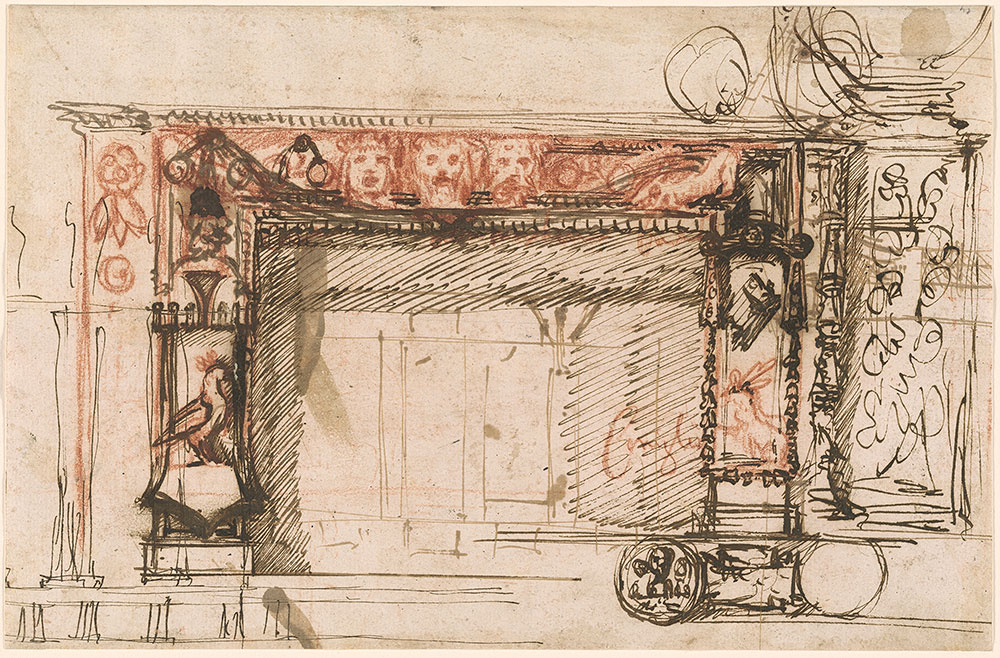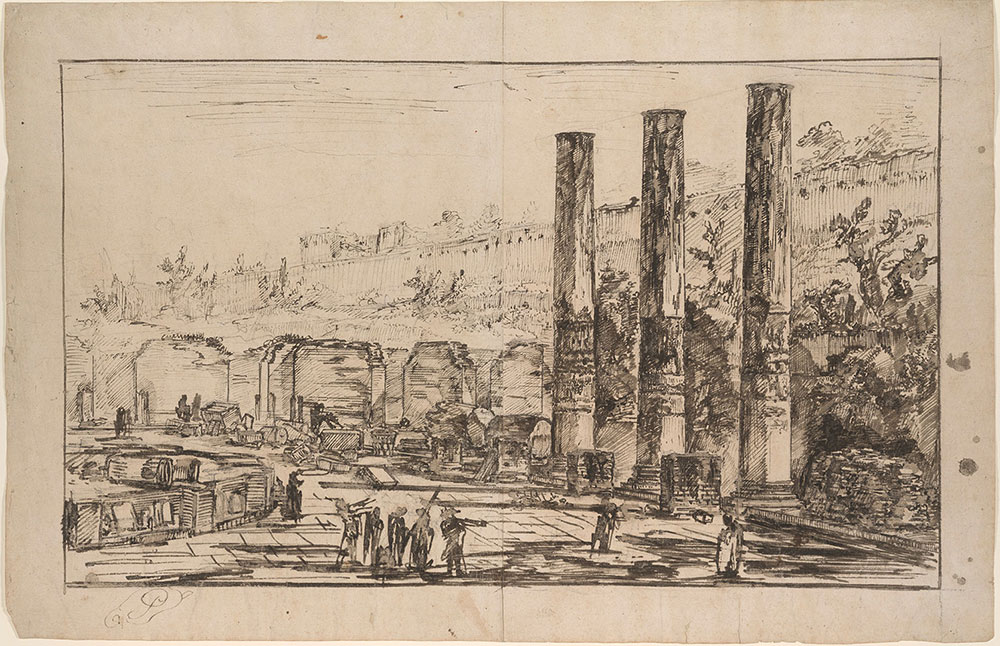
Late in life, Giovanni Battista Piranesi (1720–1778) wrote that he had left his native Venice because no patrons there would support “the sublimity of my ideas.” He resided instead in Rome, where he gained international fame as a printmaker, designer, architect, archaeologist, dealer, theorist, and polemicist. Piranesi’s lasting renown is based above all on his etchings, but his drawings offer a singular glimpse of his fervid imagination. He developed most ideas in vigorous sketches, yet few of his drawings are finished works, and virtually none matches exactly the final form of the corresponding print, object, or building for which it was preparatory or preliminary. Moreover, the drawings remained in his workshop, and they often served as new inspiration long after he created them; he also sometimes reworked his studies years after they were originally devised.
Piranesi’s earliest efforts adopt the manner of late Baroque architectural studies or the Venetian Rococo, though the models of antiquity ultimately pervade his work. He witnessed the birth of Neoclassical style but never embraced the restrained purity of Greek art, instead delighting in the eclectic ornamentation of ancient Rome. His drawings express this preference for magnificence and opulence, and they go beyond their models in creative experimentation. Writing a decade after Piranesi’s death, the English critic Horace Walpole declared that “the delicate redundance” of contemporary architecture “might perhaps be checked, if our artists would study the sublime dreams of Piranesi.”
Sublime Ideas: Drawings by Giovanni Battista Piranesi is made possible by The Gilbert & Ildiko Butler Family Foundation; the Lucy Ricciardi Family Exhibition Fund; the Christian Humann Foundation; the Wolfgang Ratjen Stiftung, Liechtenstein; and Joshua W. Sommer. Generous support is provided by the Berger Collection Education Trust and Alyce Williams Toonk, with additional support from the George Ortiz Collection, Robert Dance, the Gladys Krieble Delmas Foundation, and Russell and Marian Burke.

